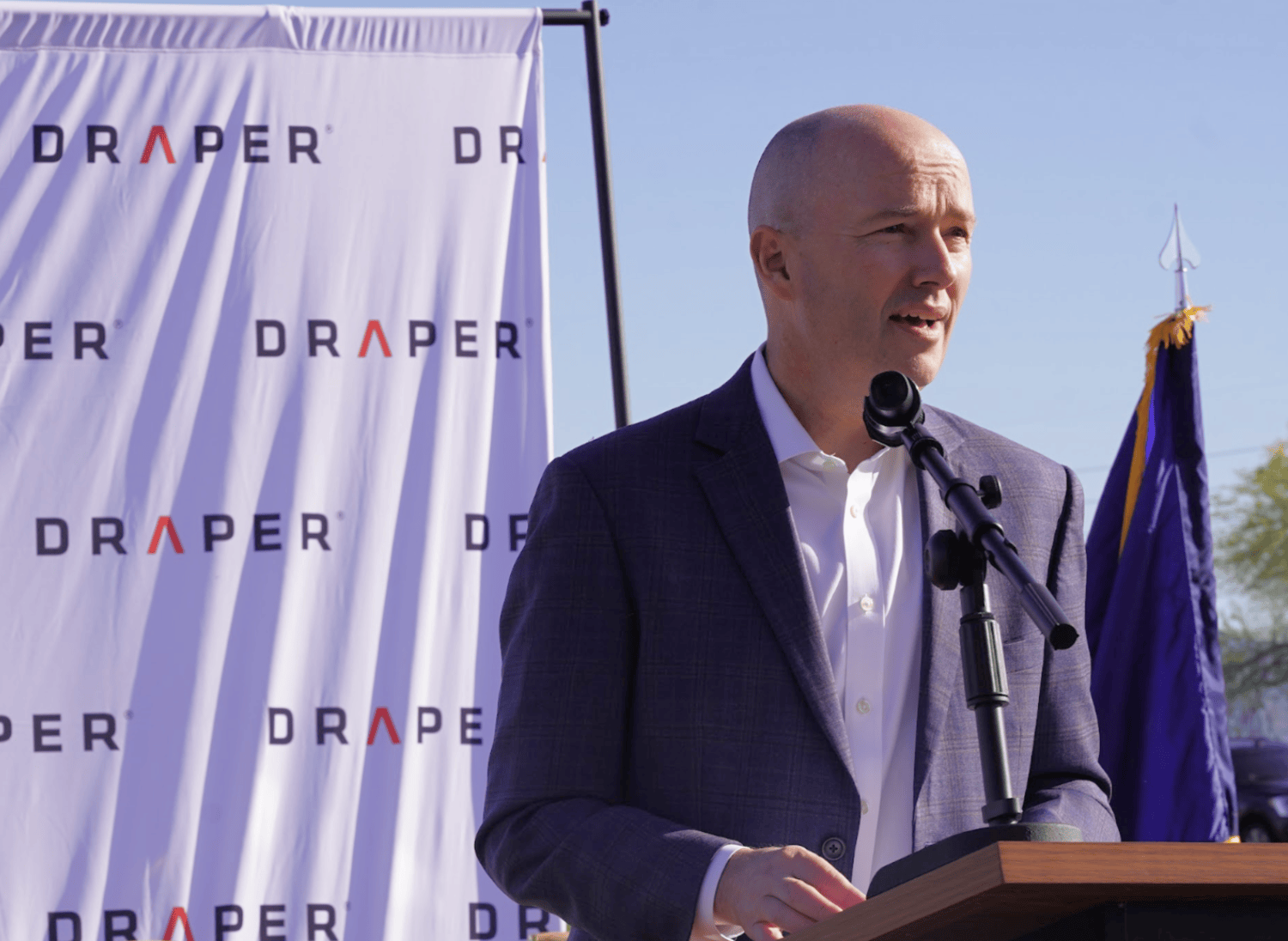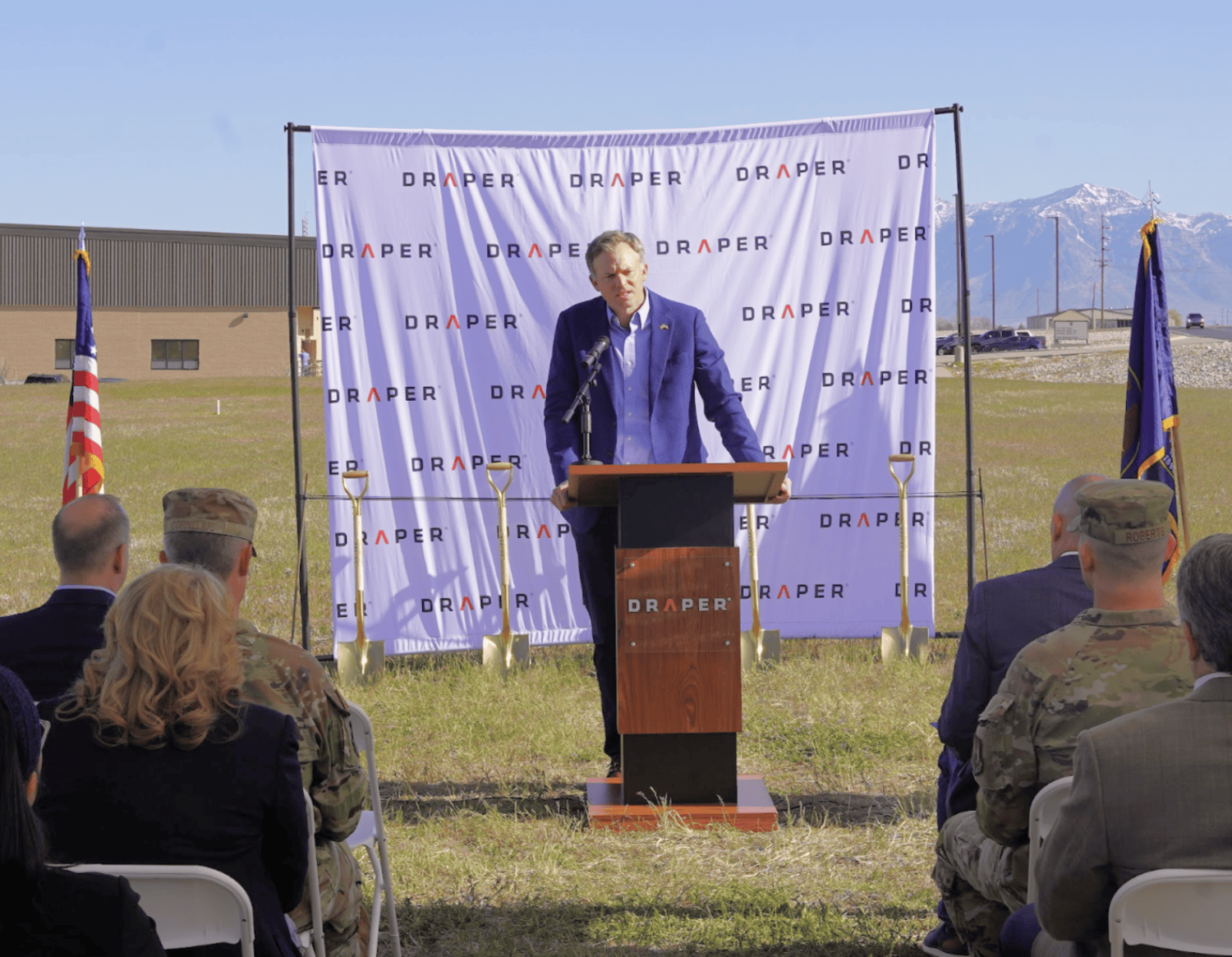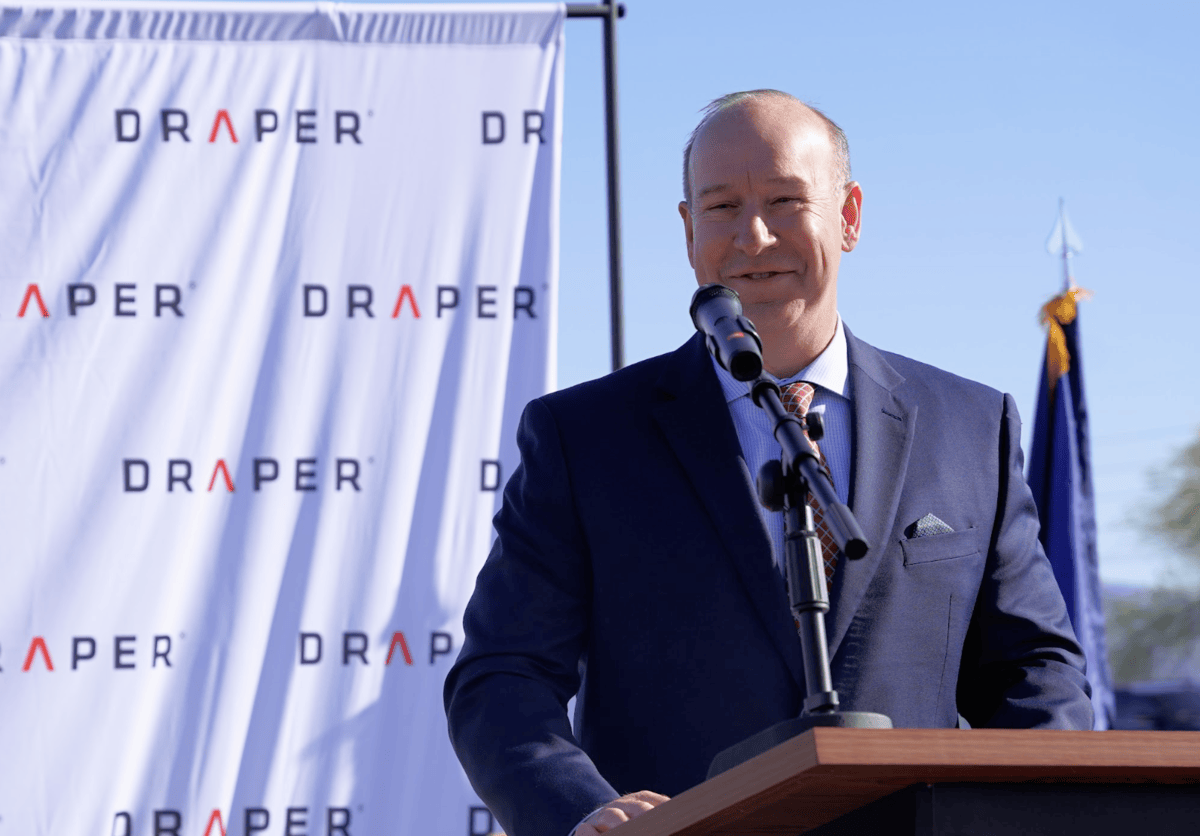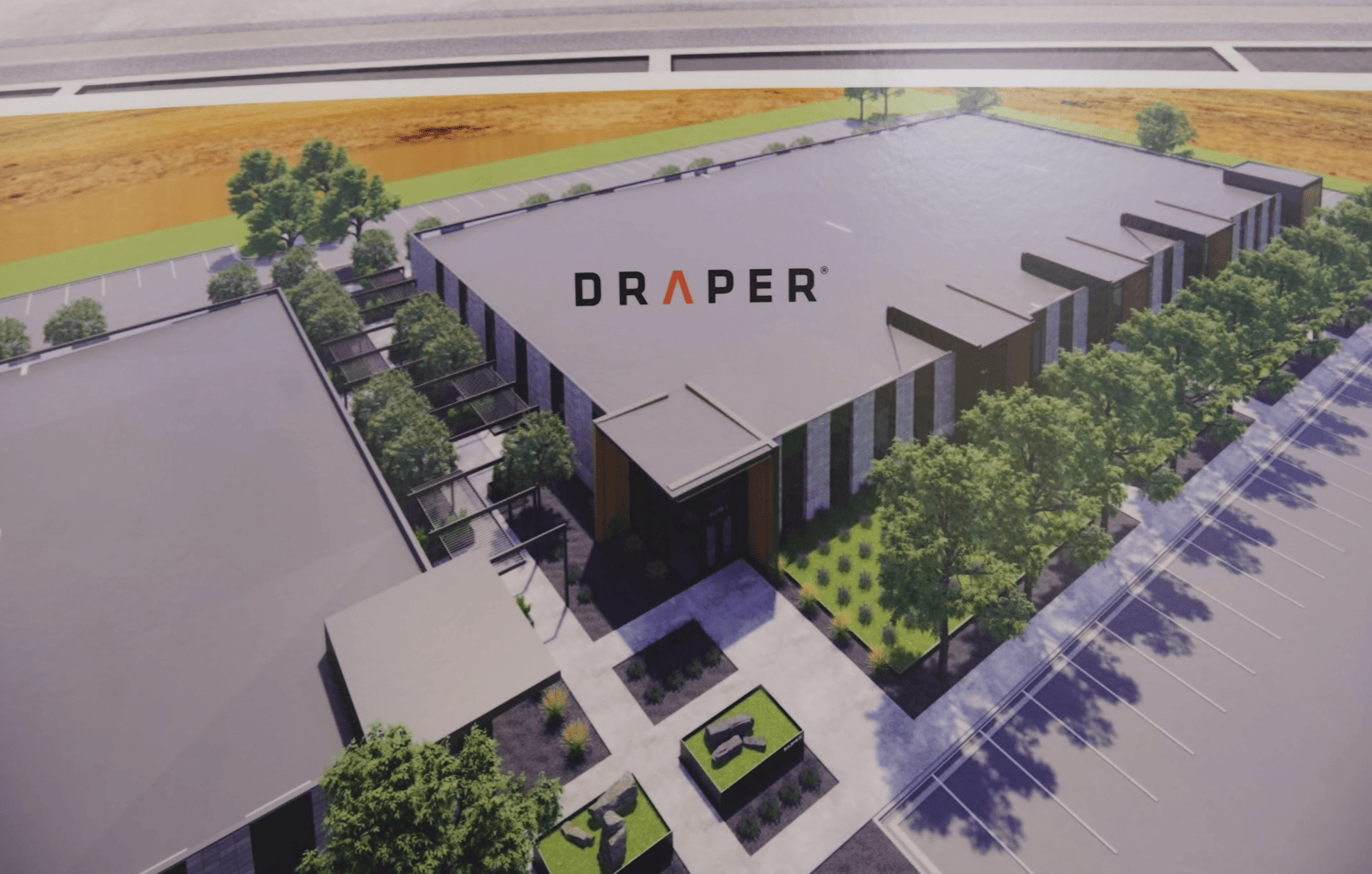

Clearfield, Utah - April 22, 2025
On a near-perfect spring day in Davis County, Utah, leaders from government, military, and industry gathered at Hill Air Force Base to break ground on a facility that symbolizes more than just physical expansion — it marks a deepening national commitment to innovation, deterrence, and the enduring partnerships behind both.
The 30,000-square-foot Engineering, Innovation and Development Center, led by nonprofit R&D leader Draper, will bring the company’s world-class capabilities in aerospace and defense closer to the action — and closer to its customers. The building will become a new hub for cutting-edge work on advanced guidance and navigation technologies, including internal measurement units, accelerometers, atomic clocks, and high-assurance microelectronics.

Utah Governor Spencer Cox celebrated the expansion, connecting Draper’s mission to Utah’s role in advancing national defense. “Draper’s decision to expand in Utah reflects the strength of our workforce, the quality of our partnerships, and the unmatched energy of our aerospace and defense sector,” Cox said, highlighting the state’s growing role as a model of collaboration between the state, military, and private sector stakeholders.
Governor Cox also acknowledged Draper’s historical contributions to national defense. “Draper’s work with Utah goes back to the early days of the Minutemen program and then the Peacekeeper ICBM,” Cox noted. “This new site will deepen and strengthen their support for not only the Air Force nuclear weapons center, but also their diverse portfolio of National Defense customers.”

Congressman Blake Moore, who represents Utah’s 1st District and Hill Air Force Base, reinforced the national stakes during his remarks. “The Sentinel doesn’t exist without this kind of work,” said Moore. “There are voices in Congress trying to defund nuclear deterrence. We will fight that — and this groundbreaking shows that Utah is all-in.” He also praised the Enhanced Use Lease (EUL) model, which allows the Department of Defense to partner with private developers like Draper and Woodbury Corporation to bring new capabilities to life on base. Moore highlighted Falcon Hill Business Park, where the new Draper facility will stand, as a national model for such partnerships.

Colonel Joe Hank, representing the U.S. Air Force’s Sentinel Program Office, underscored the long-standing relationship between Draper and the nation's strategic systems programs. “Draper has been with us at every step along the way,” Hank said. “This building goes all the way down to bedrock — a sign of permanence that Draper intends to be here for a long time, supporting our mission.” He emphasized that the new building will serve as a foundation for the future of the Sentinel program, which aims to modernize the nation’s nuclear deterrence capabilities.

Draper’s leadership echoed that sentiment. President and CEO Jerry Wohletz emphasized the importance of bringing Draper’s capabilities directly to the customer and region, supporting not only the Air Force and Missile Defense Agency but also Utah’s innovation ecosystem. “This facility strengthens our ability to deliver mission-enabling solutions,” Wohletz said. “It also creates opportunities to interact with the defense, technology, and innovation communities in the region. We feel strongly that this will contribute to Draper’s ability to innovate and grow to meet the needs of our customers.”

Wohletz also highlighted Draper’s enduring commitment to education and the next generation of innovators through the Draper Scholars Program. “Education has been at the core of Draper’s mission since its creation as the MIT Instrumentation Lab in 1933,” Wohletz noted. “That tradition lives on today, and we are proud to have Utah’s universities join us in supporting the next generation of innovators.” He proudly introduced Ethan Larson, a graduate student from the University of Utah’s Electrical and Computer Engineering Department, who was awarded the first Draper Scholar from the university. “Ethan’s work will contribute to the critical defense systems of the future,” Wohletz said, welcoming Larson and his advisor, Dr. Camp, to the program.

The new Draper building is scheduled for completion in Fall 2026 and will ultimately house over 100 engineers and staff, further anchoring Utah as a center of gravity for defense innovation. As Governor Cox put it, “We’re lucky to live here. We have great people doing incredible work. Draper is the perfect fit for what we’re building in Utah — and for what we’re defending as a nation.”
For more information, visit Draper.com.

